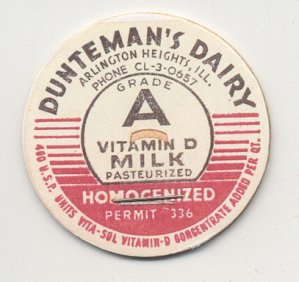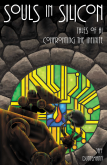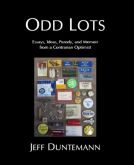 When I was a pre-teen, we used to get milk delivered to the house every few days. I don’t recall fersure which dairy it was (Hawthorn Mellody Farms?) but the milk was in massive gallon returnable glass bottles with wire carry-handles, and a paper cap was machine-pressed over the lip to seal it. The caps themselves were circular sheets of blank white paper, but stapled to the center of each cap was a printed cardboard disk about an inch and a half in diameter, containing the name of the dairy. The cardboard disks are now collectibles, related in a vague way to the juice-bottle “pogs” that were stylish for half an hour or so in the mid-1990s.
When I was a pre-teen, we used to get milk delivered to the house every few days. I don’t recall fersure which dairy it was (Hawthorn Mellody Farms?) but the milk was in massive gallon returnable glass bottles with wire carry-handles, and a paper cap was machine-pressed over the lip to seal it. The caps themselves were circular sheets of blank white paper, but stapled to the center of each cap was a printed cardboard disk about an inch and a half in diameter, containing the name of the dairy. The cardboard disks are now collectibles, related in a vague way to the juice-bottle “pogs” that were stylish for half an hour or so in the mid-1990s.
Last week I got an email from someone asking if I knew anything about Dunteman’s Dairy. I did (a little) and when I went looking around for more info I found an eBay auction for one of their milk cap disks. The disk arrived yesterday, and you see it above. As I’ve explained here a time or two, my great-grandfather Frank W. Duntemann was the only boy of five in his family to keep the second “n” at the end of his name. Most Duntemans that you see these days are related to me, and all the Duntemanns, what few remain.
Dunteman’s Dairy was located at 420 E. Northwest Highway in Arlington Heights, Illinois. It was founded and run by Lenard Barney Dunteman (1906-1992) and his wife Grace Stippick Dunteman (1909-1978). As best I can tell, Lenard started the business in 1939, built a dairy plant from scratch, and ran it for almost twenty years. He bought raw milk from local dairy farmers (including some of his cousins) pasteurized and homogenized the milk, bottled it, and delivered it with his own trucks in Arlington Heights and adjacent Chicago suburbs. He was of my grandfather’s generation. Technically, Lenard and I would be third cousins, twice removed. His father Albert Dunteman was my great-grandfather Frank Duntemann’s younger brother, if that helps at all.
I don’t know a lot more than that, nor how broad their product line was. I know that they made and sold chocolate milk, but whether they sold butter or cream, I’m still trying to find out. Lenard had a mild heart attack in late 1958, and panicked. Fearing early death, he sold the equipment to another local dairy (I don’t know which one) to generate cash to support his wife, and retired. Ironically, Lenard lived to a genteel old age, but Grace died fourteen years before he did. The dairy building is still there and has been different things over the years. Parts of it have been razed, and what’s left has been given a new facade and is now a Shell station.
One final note about paper milk caps. In the worst of a bad Chicago winter, a bottle of milk left on an exposed front porch (like ours was) would begin to freeze after an hour or two on a particularly raw morning. I still find it odd that the bottles didn’t crack from the expanding milk, but something even odder did happen: A column of frozen milk would rise from the neck of the bottle, forcing the cap off. I remember seeing the cap a full two inches above the neck of the bottle on our porch once, circa 1959. This used to be a common sight (Stevan Dohanos did a Saturday Evening Post cover on it in 1944) but these days I doubt that more than a handful of my readers have ever had milk delivered to their homes. It’s just not done much anymore.
As for why the bottles didn’t crack, well, that still bothers me. I’m speculating that with whole milk, at least, the cream that collected at the top acted as a lubricant, allowing the ice to move freely upward, relieving pressure and keeping the bottle intact. If you’ve got a better theory, I’d love to hear it!











